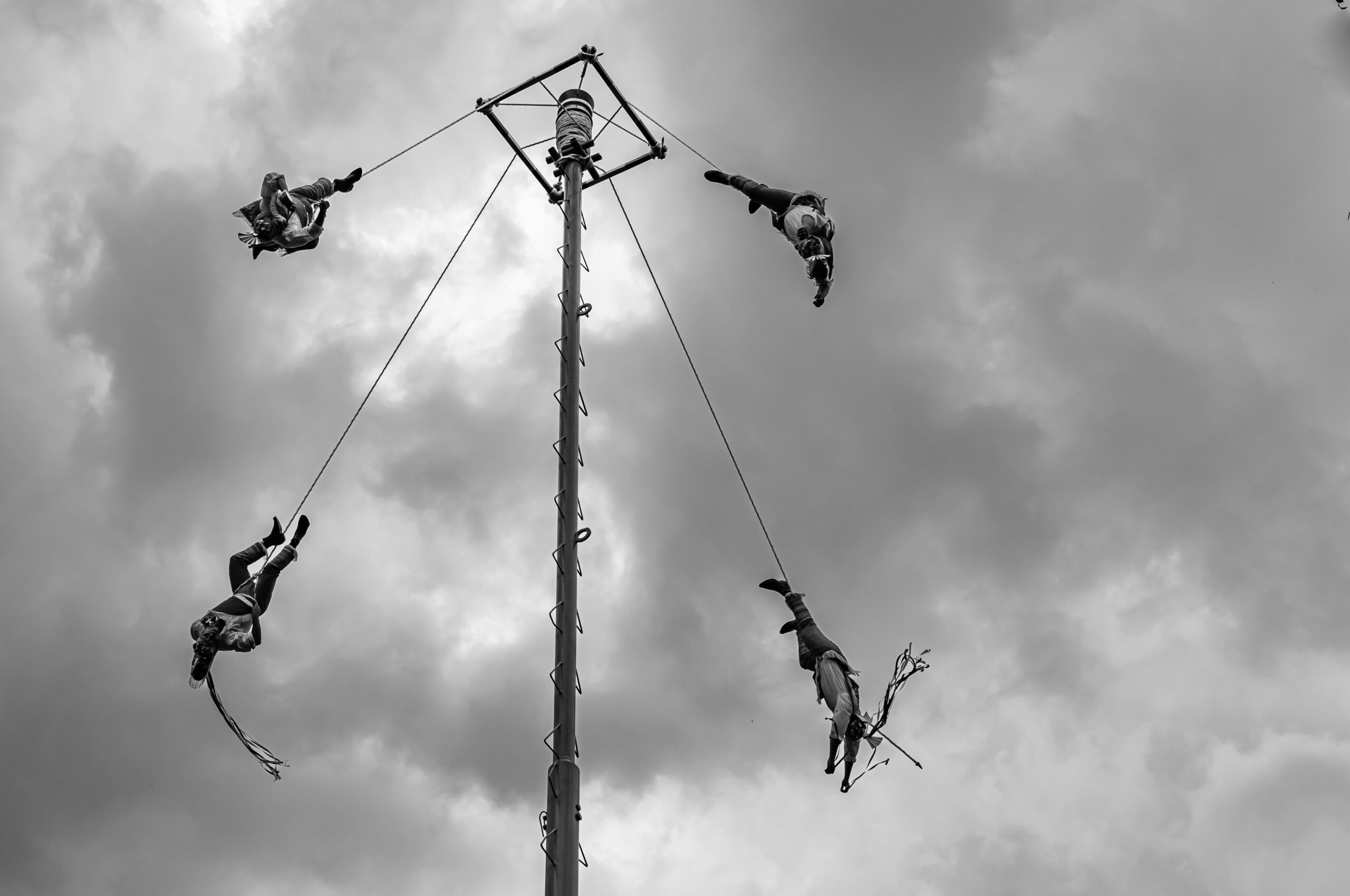
Have you ever wondered about the size of kayaks? In this article, we will explore the different lengths of kayaks and how it can affect your paddling experience. From shorter recreational kayaks to longer touring kayaks, each length offers unique advantages and considerations. Whether you’re a beginner looking for stability or an experienced kayaker seeking speed, understanding the varying lengths of kayaks will help you make an informed decision for your next adventure on the water.

Factors Affecting Kayak Length
When it comes to choosing the right kayak, one of the most important factors to consider is the length of the kayak. The length of a kayak can have a significant impact on various aspects of your paddling experience, including maneuverability, stability, and overall performance on the water. There are several factors that can affect the recommended length of a kayak, and understanding these factors can help you make an informed decision that matches your skill level, intended use, and personal preferences.
Paddler’s Skill Level
Your skill level as a paddler is a crucial factor to consider when determining the appropriate length of a kayak. If you are a beginner or have limited experience with kayaking, a shorter kayak may be more suitable for you. A shorter kayak tends to be more stable and easier to control, which can be beneficial when you are still getting comfortable with the basic techniques of paddling. On the other hand, if you are an experienced paddler or have advanced kayaking skills, you may prefer a longer kayak that offers more speed and maneuverability.
Intended Use
Another factor that plays a significant role in determining the recommended length of a kayak is the intended use of the kayak. Different types of kayaking activities require kayaks of varying lengths to optimize performance and efficiency. Whether you plan to use your kayak for recreational paddling, touring, whitewater adventures, or fishing, the specific demands of each activity will dictate the ideal kayak length.
Maneuverability
The length of a kayak directly affects its maneuverability on the water. Generally, shorter kayaks are more maneuverable and easier to turn, making them ideal for navigating through narrow waterways, tight corners, or obstacles. If you enjoy exploring small rivers, streams, or twisty water trails, a shorter kayak will allow you to maneuver more effortlessly. However, it’s worth noting that extremely short kayaks may sacrifice some straight-line tracking and speed.
Stability
Stability is another critical factor determined by kayak length. Generally, longer kayaks tend to provide better stability compared to their shorter counterparts. This added stability can be beneficial for beginners or those who prefer a more relaxed and stable paddling experience. On the other hand, shorter kayaks may sacrifice some stability in favor of increased maneuverability and responsiveness. It’s important to strike a balance between stability and maneuverability based on your skill level and intended use.
Types of Kayaks
Before diving into the specifics of kayak lengths, let’s explore the different types of kayaks available in the market. Each type is designed to excel in a particular paddling activity, and understanding their unique features and advantages can help you narrow down your options and choose the right kayak for your needs.
Recreational Kayaks
Recreational kayaks are the most common type of kayak and are designed for relaxed paddling in calm waters, such as lakes, ponds, and slow-moving rivers. These kayaks are typically shorter in length, ranging from around 8 to 12 feet. They are known for their stability, ease of use, and comfortable seating. Recreational kayaks are perfect for beginners, casual paddlers, and those seeking a leisurely day on the water.
Touring Kayaks
If you’re looking to cover longer distances and explore different water bodies, touring kayaks are a great option. These kayaks are designed for more extended trips and offer increased speed, efficiency, and storage capacity. Touring kayaks are typically longer, ranging anywhere from 12 to 18 feet, ensuring better tracking and improved stability in open water conditions. They often feature additional storage compartments, such as bulkheads or hatches, to carry gear for multi-day expeditions.
Whitewater Kayaks
For those seeking an adrenaline rush and tackling fast-flowing rivers and rapids, whitewater kayaks are the way to go. These kayaks are specifically designed to navigate through tumultuous whitewater with agility and precision. Whitewater kayaks are typically shorter in length, ranging from 6 to 10 feet, to enhance maneuverability and responsiveness in turbulent conditions. They feature specialized designs, such as rocker profiles and planing hulls, to ensure quick turns and avoid getting caught in powerful currents.
Fishing Kayaks
Anglers who enjoy combining their love for kayaking with fishing will find fishing kayaks highly suitable for their needs. Fishing kayaks offer stability, ample storage options, and enhanced maneuverability for accessing fishing spots that are out of reach for larger boats. Fishing kayaks vary in length, ranging from 10 to 14 feet, and often come equipped with built-in rod holders, tackle storage, and other angler-centric features.
Recreational Kayaks
Recreational kayaks are a popular choice among beginners and casual paddlers looking to enjoy a relaxing day on the water. These kayaks are generally shorter in length compared to other types, with a typical range of around 8 to 12 feet. The shorter length of recreational kayaks enhances their stability and maneuverability, allowing beginners to feel confident and comfortable during their paddling adventures.
One of the key advantages of recreational kayaks is their stability. The wider hull designs and flatter bottoms provide a stable platform, minimizing the risk of tipping over or feeling unsteady. This stability makes them ideal for entry-level paddlers or those who prefer a more relaxed and leisurely kayaking experience. Recreational kayaks also tend to offer comfortable seating and ample legroom, making them suitable for longer trips or paddling excursions.
However, the shorter length of recreational kayaks can impact their overall speed and tracking. Due to their reduced length, these kayaks may require more effort to maintain a straight line and may not be as efficient for covering longer distances. Additionally, the shorter length may limit their ability to handle rougher water conditions or strong currents effectively.
Despite these potential limitations, recreational kayaks remain an excellent choice for beginners and casual paddlers seeking a stable and user-friendly kayak for calm water adventures.
Touring Kayaks
For those looking to embark on longer kayaking trips or explore various water bodies, touring kayaks are the ideal choice. These kayaks are specifically designed to provide enhanced speed, efficiency, and comfort during extended paddling excursions. Touring kayaks are longer than recreational kayaks, typically ranging from 12 to 18 feet, allowing for improved tracking and better performance in open water conditions.
The longer length of touring kayaks provides several advantages. Firstly, it allows for better tracking, meaning the kayak maintains a straighter course with less effort. This is particularly advantageous when paddling across large lakes, along coastlines, or in strong winds. Secondly, the increased length provides more storage space for gear and supplies, making touring kayaks suitable for multi-day trips or expeditions. Many touring kayaks feature sealed bulkheads or hatches, allowing you to safely store equipment and access it as needed.
Another advantage of touring kayaks is their improved efficiency. The streamlined designs and longer waterlines enable these kayaks to glide effortlessly through the water, requiring less energy and effort to maintain a consistent speed. This can be particularly beneficial during longer journeys when conserving energy becomes essential.
Despite their many advantages, touring kayaks may not be the best option for beginners or paddlers seeking a more casual kayaking experience. The longer length can make them less maneuverable and more challenging to handle, especially in narrow waterways or areas with obstacles. Additionally, the increased size and weight of touring kayaks may require additional strength and effort to transport and store.
However, if you are an experienced paddler or have aspirations of embarking on extended kayaking adventures, a touring kayak will provide you with the speed, efficiency, and storage capabilities necessary for exploring various water bodies.

Whitewater Kayaks
If you’re an adventurous paddler seeking thrilling experiences navigating fast-flowing rivers and challenging rapids, whitewater kayaking is for you. Whitewater kayaks are specifically designed to tackle turbulent water conditions with agility and precision. These kayaks are shorter in length compared to recreational and touring kayaks, typically ranging from 6 to 10 feet, to enhance maneuverability and responsiveness in rapid-filled environments.
One of the key features of whitewater kayaks is their maneuverability. The shorter length, combined with specialized designs like rocker profiles and planing hulls, allows paddlers to make quick turns, execute precise maneuvers, and navigate through powerful currents with ease. This agility provides an exhilarating experience for paddlers who enjoy the challenges presented by whitewater environments.
Whitewater kayaks also offer excellent stability in tumultuous waters. The wide and flat hull designs, coupled with the ability to roll or right the kayak after capsizing, ensure that paddlers stay upright and in control throughout their whitewater adventures.
However, due to their shorter length, whitewater kayaks sacrifice some speed and straight-line tracking compared to longer kayaks. This is a trade-off necessary to maintain maneuverability and responsiveness in turbulent water conditions. Additionally, the limited storage space and lack of comfortable seating found in whitewater kayaks may not make them the best option for lengthy or relaxed paddling trips.
If you are seeking adrenaline-fueled adventures and the excitement of navigating whitewater rapids, a whitewater kayak is the perfect choice for you. Their agility, stability, and specialized designs make them the go-to option for paddlers who love the thrill of challenging river environments.
Fishing Kayaks
Combining the joys of kayaking and fishing, fishing kayaks provide anglers with a versatile and efficient platform for their favorite pastime. Fishing kayaks come equipped with various features and advantages that make them ideal for accessing fishing spots that are otherwise inaccessible to larger boats or land-based anglers. The length of fishing kayaks can vary, typically ranging from 10 to 14 feet, depending on the specific model and its intended use.
One of the key features of fishing kayaks is their stability. The wider hull designs and increased width of fishing kayaks provide exceptional stability, enabling anglers to stand up and cast their lines with confidence. This stability is crucial when reeling in fish or when battling larger catches. Additionally, fishing kayaks often have specialized stability-enhancing systems, such as outriggers or pontoon-style hulls, to provide additional support.
Fishing kayaks offer excellent storage options for carrying fishing gear and supplies. Many fishing kayaks come with built-in rod holders, tackle storage compartments, and additional attachment points for gear customization. This ensures that anglers have easy access to their fishing equipment and can keep their gear organized during their fishing expeditions.
Despite their advantages, fishing kayaks may not be the best option for paddlers seeking speed or efficiency. The wider hull designs that provide stability may also increase the resistance and slow down the kayak. Additionally, the added features and accessories for fishing may add weight and make the kayak less nimble compared to other types.
Anglers who want to enjoy the peacefulness of kayaking while pursuing their passion for fishing will find fishing kayaks to be an excellent choice. Their stability, storage capabilities, and angler-centric features make fishing kayaks the ultimate companion for a successful day on the water.

Sit-On-Top vs. Sit-In Kayaks
When choosing a kayak, you will also need to consider whether you prefer a sit-on-top or a sit-in kayak. Each style offers its own set of advantages and disadvantages, and the choice between the two can also impact the length considerations for your kayak.
Length Considerations
Both sit-on-top and sit-in kayaks come in a variety of lengths to accommodate different paddling styles and preferences. Generally, sit-on-top kayaks tend to be shorter than sit-in kayaks, making them more maneuverable and easier to handle in various environments. The shorter length of sit-on-top kayaks also allows for greater stability, which can be beneficial for inexperienced paddlers or those who wish to fish or swim from their kayak.
Sit-in kayaks, on the other hand, tend to be longer in order to provide additional space for the paddler’s legs and accommodate a sealed cockpit design. The added length of sit-in kayaks enhances their tracking ability and overall speed, making them suitable for longer trips or more advanced paddlers seeking increased efficiency.
Ultimately, the length considerations for sit-on-top and sit-in kayaks will depend on your personal preferences and the specific activities you plan to engage in.
Advantages of Sit-On-Top Kayaks
Sit-on-top kayaks offer several advantages that make them a popular choice for many paddlers. One of the key advantages is their self-bailing design. Sit-on-top kayaks have scupper holes or drain plugs that allow water that enters the kayak to drain out. This design ensures that even if the kayak flips or takes on water, it will not sink and can be easily emptied and flipped back upright.
Another advantage of sit-on-top kayaks is their ease of entry and exit. The open design allows paddlers to simply step onto the kayak from the shore or water without having to maneuver themselves into a cockpit. This makes sit-on-top kayaks more accessible and suitable for individuals with mobility issues or those who prefer not to feel confined in a closed cockpit.
Sit-on-top kayaks also offer greater stability compared to sit-in kayaks. The wide and flat hull designs, combined with a higher center of gravity, provide excellent stability and reassurance for beginners or those who wish to fish or enjoy recreational activities from their kayak. The stable platform of sit-on-top kayaks allows for easy and safe re-entry into the kayak after swimming or capsizing.
Advantages of Sit-In Kayaks
Sit-in kayaks have their own unique advantages that make them a preferred choice for certain paddlers. One of the key advantages is their superior protection against the elements. The sealed cockpit design of sit-in kayaks provides a level of insulation and protection against wind, cold water, and splashing waves. This can be particularly appealing for paddlers who plan to venture out in cooler climates or rougher water conditions.
Sit-in kayaks also offer better control and a more efficient paddling experience. The snug fit of the paddler inside the cockpit allows for a closer connection to the kayak, resulting in improved responsiveness and increased power transfer during each paddle stroke. The longer length of sit-in kayaks enhances their tracking ability, ensuring that they maintain a straighter course with minimal effort.
Additionally, the enclosed storage space within the cockpit of sit-in kayaks provides a secure and dry place to store gear, snacks, and other essentials. This is especially beneficial for longer trips or when paddlers need to carry additional equipment or supplies.
Both sit-on-top and sit-in kayaks have their own advantages, and the choice between the two ultimately depends on personal preference, intended use, and specific requirements.
Transportation and Storage Considerations
In addition to the factors mentioned above, it’s essential to consider transportation and storage considerations when choosing a kayak. The length of your kayak can directly impact how easily it can be transported and stored, and understanding these considerations will help you make a practical decision based on your individual circumstances.
Vehicle Size
One of the primary transportation considerations is the size of your vehicle. If you plan to transport your kayak on the roof of your vehicle, it’s crucial to ensure that your vehicle’s roof rack system can accommodate the length of the kayak. Longer kayaks may require a larger or specialized roof rack system, while shorter kayaks may fit comfortably on a standard roof rack.
It’s also important to consider the weight capacity of your vehicle’s roof rack system. Longer kayaks may weigh more, especially touring kayaks or fishing kayaks with additional equipment. Ensure that your roof rack system can safely support the weight of your kayak during transportation to prevent any damage to your vehicle or kayak.
For those with smaller vehicles or limited roof space, it may be more practical to transport a shorter kayak that can easily fit inside the vehicle or on a smaller roof rack system. Consider the dimensions and weight of the kayak in relation to your vehicle to ensure a safe and secure transportation experience.
Storage Space
Another consideration is the storage space available for your kayak when it’s not in use. If you have ample storage space, such as a garage, shed, or dedicated kayak storage area, the length of the kayak may be less of a concern. Longer kayaks can be safely stored upright or suspended from the ceiling using specialized kayak storage systems.
However, if you have limited storage space, such as a small apartment or no dedicated storage area, it’s important to choose a kayak length that can be conveniently stored. In such cases, shorter kayaks or inflatable kayaks that can be deflated and folded may be more practical options. Consider the dimensions and storage requirements of the kayak when making your decision to ensure you can safely and efficiently store your kayak when it’s not in use.
Portability
The portability of your kayak is also an important consideration, especially if you plan to transport or carry it to various launch locations. Longer kayaks may require more strength and effort to maneuver and lift, particularly if you need to carry them over longer distances or challenging terrain. If portability is a priority for you, opting for a shorter kayak or considering lightweight materials, such as fiberglass or carbon fiber, can make transportation and carrying easier.
Additionally, inflatable kayaks offer excellent portability due to their ability to be deflated, folded, and packed into a compact carry bag. Inflatable kayaks are ideal for individuals with limited storage space or those who want to easily transport their kayak in the trunk of a car or on public transportation.
Consider your specific transportation and portability needs when choosing the length of your kayak to ensure that you can comfortably transport and carry it to your desired launch locations.
How to Choose the Right Kayak Length
Choosing the right kayak length is a decision that should be based on a combination of factors, including your height and weight, skill level, and intended use. By considering these factors, you can select a kayak length that optimizes your paddling experience and matches your preferences and needs.
Considerations for Paddler’s Height and Weight
The first consideration when choosing a kayak length is your height and weight. Taller individuals may require a longer kayak to ensure proper legroom and a comfortable paddling position. Similarly, heavier paddlers may benefit from a longer kayak with increased buoyancy and weight capacity. On the other hand, smaller individuals may find shorter kayaks more suitable, as they can offer a better fit and easier maneuverability.
When selecting a kayak based on your height and weight, consider the recommended weight capacity and specifications provided by the kayak manufacturer. These guidelines will ensure that you choose a kayak that can safely support your weight and provide a comfortable and enjoyable paddling experience.
Skill Level and Experience
Your skill level and experience as a paddler should also influence your choice of kayak length. If you are a beginner or have limited experience, a shorter kayak with increased stability and maneuverability may be more appropriate. This will allow you to build your confidence and develop your paddling techniques without feeling overwhelmed by a longer or less stable kayak.
Experienced paddlers who have developed their skills and feel confident on the water may prefer longer kayaks that offer increased speed, efficiency, and tracking. These kayaks can enhance your overall performance and provide a more challenging and rewarding paddling experience.
When considering your skill level and experience, it’s important to be honest with yourself and choose a kayak that matches your current abilities while also allowing room for growth and progression.
Intended Use
Lastly, your intended use of the kayak will play a significant role in determining the appropriate length. Consider the specific activities you plan to engage in, whether it’s recreational paddling, touring, whitewater adventures, or fishing, and choose a kayak length that aligns with those activities.
If you plan to mainly paddle on calm waters, such as lakes or slow-moving rivers, a shorter kayak may suffice. These kayaks offer stability and maneuverability, making them ideal for leisurely paddling or exploring small water bodies.
For longer trips or expeditions, touring kayaks are a suitable choice. Their longer length provides improved tracking, speed, and storage capabilities necessary for extended journeys.
Whitewater kayaks are designed for navigating turbulent rivers and rapids, so a shorter kayak with enhanced maneuverability is essential for this adventurous activity.
Anglers who plan to combine kayaking with fishing will find fishing kayaks to be the most appropriate choice. These kayaks offer stability, storage options, and angler-centric features that cater to the specific needs of fishing enthusiasts.
By aligning the kayak length with your intended use, you can ensure that your kayak is optimized for the activities you plan to engage in and provides the best possible experience on the water.
Summary
Choosing the right kayak length is a critical decision that can significantly impact your paddling experience. Factors such as the paddler’s skill level, intended use, maneuverability, stability, and transport/storage considerations should all be taken into account when selecting a kayak.
Recreational kayaks, which are shorter and offer increased stability, are perfect for beginners or casual paddlers seeking a leisurely day on calm waters. Touring kayaks, longer in length, are designed for covering longer distances and offer increased speed, efficiency, and storage capacity. Whitewater kayaks are short and highly maneuverable, perfect for navigating turbulent rivers and rapids. Fishing kayaks, with their stability and angler-centric features, provide anglers with a versatile platform for combining kayaking and fishing pursuits.
The choice between a sit-on-top or sit-in kayak should also be considered, with sit-on-top kayaks providing excellent stability and easy entry/exit, while sit-in kayaks offer superior protection from the elements and increased control during paddling.
Transportation and storage considerations, such as vehicle size, available storage space, and portability, are essential for convenience and practicality. By carefully considering these factors, you can ensure that your chosen kayak length can be comfortably transported and stored according to your individual circumstances.
Ultimately, the right kayak length for you should be determined by your height and weight, skill level, and intended use. Finding the perfect match between these factors will result in a kayak that enhances your paddling experience and provides countless hours of enjoyment on the water.









